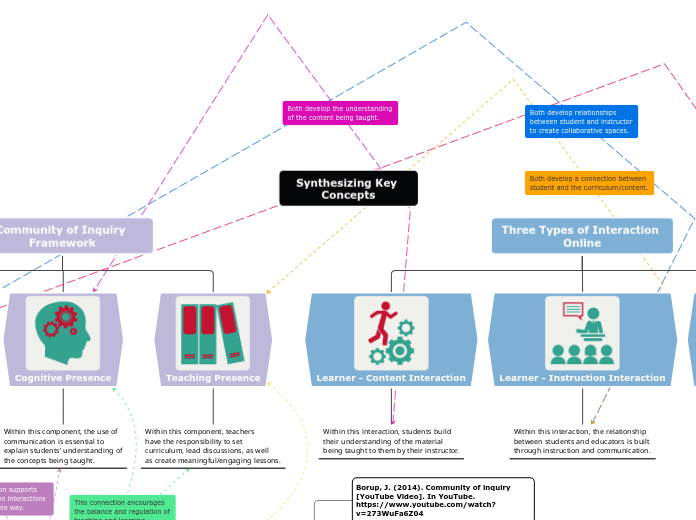Synthesizing Key Concepts
Community of Inquiry Framework

Social Presence
Within this component, both instructors
and students must create their digital
personalities to mirror their "real" self to
encourage collaboration online.

Cognitive Presence
Within this component, the use of
communication is essential to
explain students' understanding of
the concepts being taught.

Teaching Presence
Within this component, teachers
have the responsibility to set
curriculum, lead discussions, as well
as create meaningful/engaging lessons.
Three Types of Interaction Online

Learner - Content Interaction
Within this interaction, students build
their understanding of the material
being taught to them by their instructor.

Learner - Instruction Interaction
Within this interaction, the relationship
between students and educators is built
through instruction and communication.

Learner - Learner Interaction
Within this interaction, there is
a focus on the relationships
between students where they can
collaborate and socialize together.
